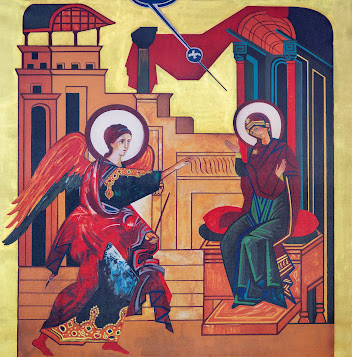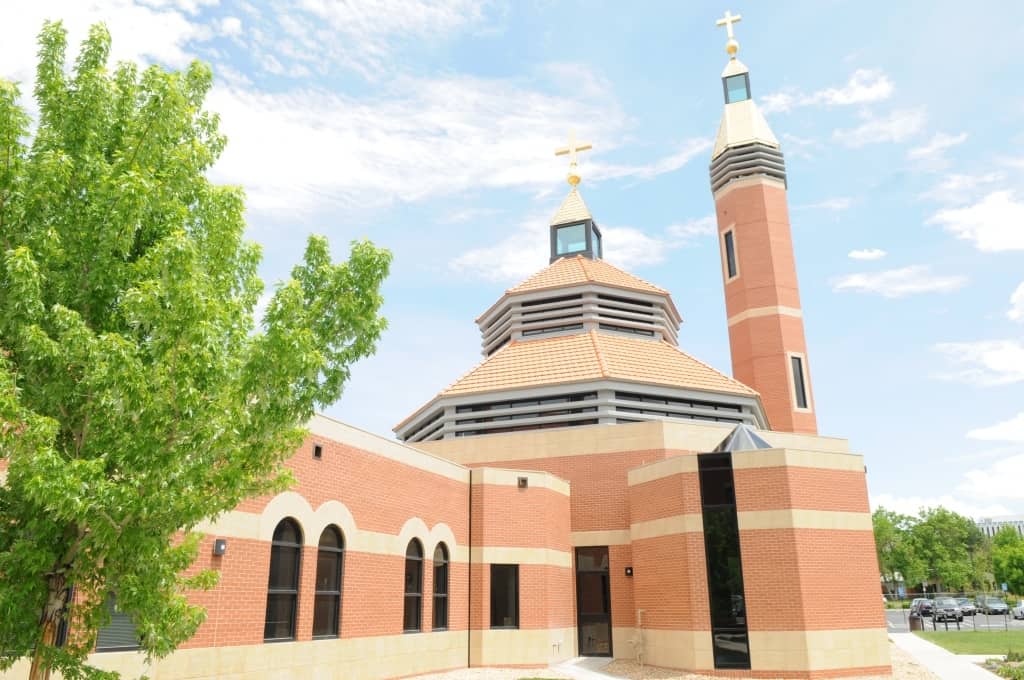In this two-part series, we look at the inter-relationship between Jewish mysticism and Gnosticism, and their influence on the thought and teaching of Kiko Argüello.
Kiko's love for and reliance on Judaism (and assorted Judaica--eg. here and here) for his syncretic pseudo-church is well-known and well-documented. However, what might not always be as obvious is that his particular brand of Judaism tends to be more Kabbalic--more mystical and esoteric--than "standard" Judaism.
Of particular note is the Merkaba, Kiko's process of cleromancy by which destinations are determined for his Neocatechumenal missionary families and seminarians. ("How did these kids from Brazil and Kiribati and Rwanda end up all the way over here in the States for seminary?" "How did this family from the States end up in Denmark when they don't even know Danish?" That's how).
The word "merkaba" (מֶרְכָּבָ֖ה), which means "chariot," is used in the Neocatechumenal context in reference to Ezekiel 1. For instance, in the Catechetical Directory for Teams of Catechists, Vol. 1 we read:
"The God of Scripture is never immobile... Our God is the "Merkaba" (see Ezek 1), the chariot of fire, the one who 'passes'." (p. 65)
"God has exalted and lifted up this Jesus. This is why the Ascension, which we understand badly, because we believe that it is only about a Jesus who goes flying off into the air, is of great significance. You can see this already in the Old Testament: the chariot of Yahweh that passes, which is a lifting up (see Ez 1)." (p. 161)
"This dynamic passing of Yahweh can be seen throughout Scripture. Yahweh is the merkabah, the 'chariot of fire' (see Ez 1). God's appearance always causes a tension, dynamism, opens a way that is glorious." (p. 311)
"The presence of Jesus [in the Eucharist] is the chariot of fire that comes to take us to glory, to make us pass from death to resurrection." (p. 359)
"How marvelous it is that Jesus Christ goes with you and brings you on his chariot of fire and says: Come with me. We're going to set fire to the world!" (p. 411)
No fewer than five times, Kiko's guide for the initial catechesis refers to the chariot of fire, even explicitly referencing Ezekiel 1 multiple times, as well. The problem (well, the one that we'll address for now) is that "merkaba" is not a word that appears in Ezekiel 1. Its associations with that particular scripture come from the Zohar, a foundational work for the Kabbalah school of esoteric Jewish mysticism.
According to Kabbalah Online:
The Chariot described in Ezekiel's prophetic vision (Ezekiel chapter 1) is the vehicle for divine revelation in the world of Yetzira, the next spiritual world beyond the spiritual dimension of our physical world, the world of Asiya. Meditation on various aspects of the Merkava was the focus of an important stream of Jewish mysticism. Here the Zohar explains that Joseph [Gen 46:29] harnessed his Merkava - his chariot - in order to ascend to a higher level of divine revelation.
This idea of a "higher level of divine revelation" can be seen concretely and physically as well as intellectually. Let's take a look at the Porto San Giorgio, the Neocat International Center in Italy:
The building, according to Italian author Lino Lista, has been called:
...the spaceship that takes you to heaven, a saying that descends from Kiko... The shape really evokes that of a flying saucer and, in the imagination Neocatechumenal, symbolizes Merkaba, the ecstatic vision of the divine chariot of Ezekiel, one of the biblical themes swallowed up by various modern syncretic currents of the New Age...
The mystique of Merkaba is one that leads to the vision of the throne of God and to the contemplation of the celestial world. To reach that, the ascetic must make a journey of perfection in degrees (seven levels)...
The ship that takes you to heaven, the definition of the Neocatechumenals for the building with the dome of concenctric wheels, seems to recall very well the work of the heavenly Chariot, by virtue of which, in Jewish mysticism, one is guided into the realm of the unseen, into its secrets. (Il Fango e Il Segreto [The Mud and the Secret], p. 88-90)
Lest you think this was an architectural one-off, we see a similar design on the Neocats' Domus Galilaeae complex in Israel, as well:
And the chapel exterior at the Redemptoris Mater seminary in Denver, while not explicitly screaming "flying saucer," might at least be considered subtly reminiscent of the theme:
For a final note on Jewish mysticism, we note that Joseph Weiss--a scholar on Jewish mysticism and a disciple of Gershom Scholem--writes in his book Studies in East European Jewish Mysticism and Hasidism (p. 27-42) that a group of pre-Hasidic (c. pre-1770s) Jews claimed to be pneumatic, in that they possessed the prophetic gift of Ru'aḥ ha-Kodesh (רוּחַ הַקֹּדֶשׁ; literally "the Holy Spirit") by which they could, among other things, reveal the sins of others. Where else might we encounter this idea of a small group of laymen "revealing your sins" to you and claiming to speak with a pneumatic or charismatic authority?
"The one who knows if you are giving signs of adult faith is the Apostle and the catechist, that is the one whom the bishop has entrusted with the task of leading you to faith." (p. 29, Catechetical Directory for Teams of Catechists, Vol. 1)"You can think that you are very Christian, but then your catechist arrives in the name of the bishop and tells you that you haven't got an ounce of Christianity." (p. 199)"The communities obey their catechists in what concerns the way. Why? Because in them they recognize a charism of God at the service of the Church." (p. 382)"Electing a catechist is very important. God will bless you with a hundredfold in everything; there's nothing greater." (p. 407)"You're a catechist, aren't you? I want to say something very important. We have been called into the world to do the impossible... what man can't do, what only God can do." (p. 425)"...a catechist has to say the truth." (p. 426)
The term "pneumatic," as well as the ideas of "concentric wheels/circles" and "different levels of revelation/salvation" are not unique to Jewish mysticism. These terms and concepts also have deep roots in the Gnostic heresies condemned by the Church, and called out in particular by St. Irenaeus of Lyon in his landmark work, Adversus Haereses, or "Against Heresies."
In Part 2, we will look at the Gnostic notions of "three kinds of men," and see how Kiko has syncretized similar notions into his own movement.





No comments:
Post a Comment